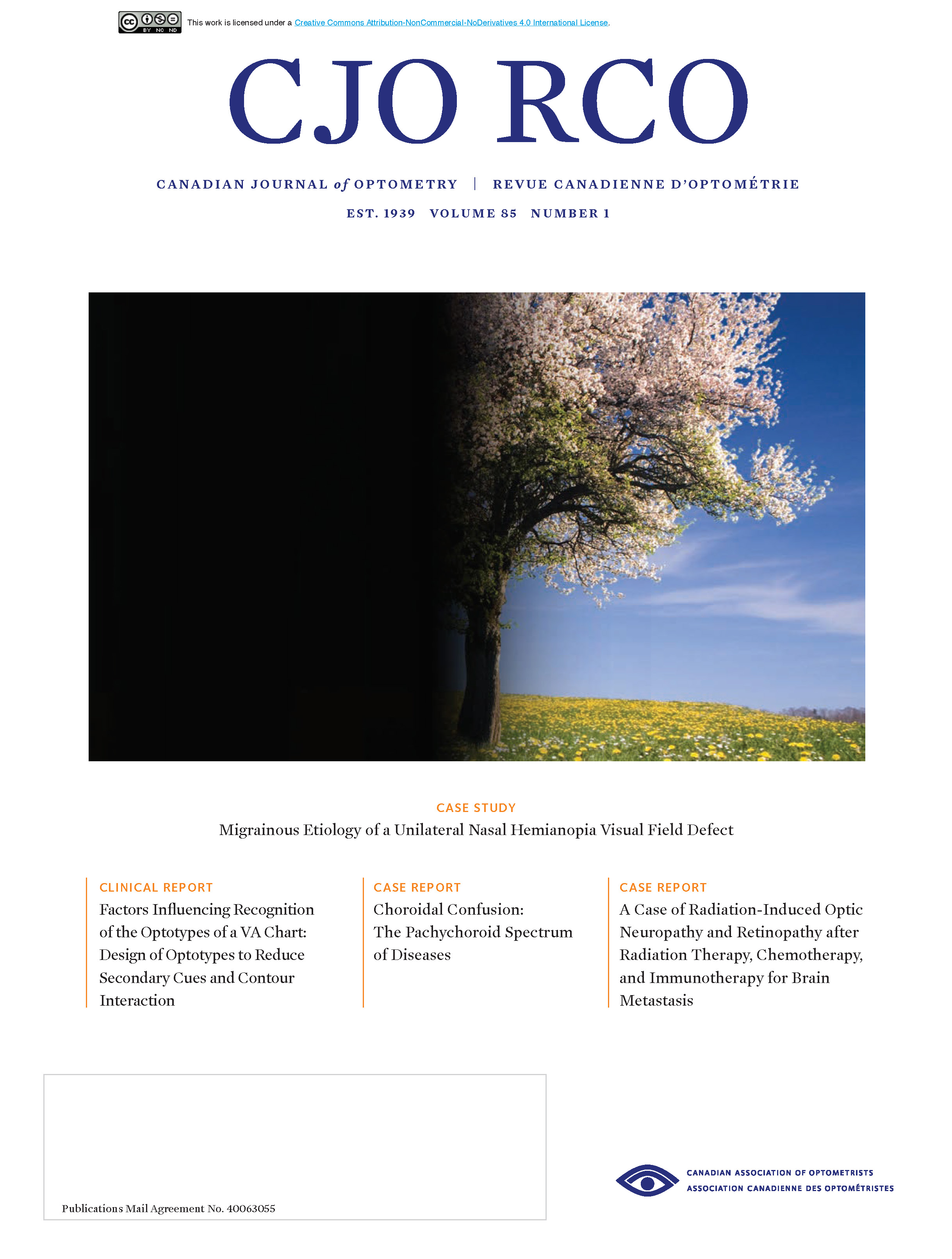Factors Influencing Recognition of the Optotypes of a VA Chart: Design of Optotypes to Reduce Secondary Cues and Contour Interaction
Keywords:
visual acuity, optotypes, contour interaction, wave chart, meridional visual acuityAbstract
Significance: The measurement of the visual acuity is often the basis of the end-point of the refraction. The recorded value may influence the legal, medical and financial status of a person. When tested by different examiners, a single patient may have a different result noted, due to both the chart used, and the end-point accepted by the examiner. This may influence the status of the patient.
Purpose: The paper considers factors which influence the response of the patient during the examination. Apart from the size of the target, which is the nomenclature recorded, the design of the optotypes may include: varying amounts of contour interaction; secondary cues; psycho-dynamic behaviour of the patient; past experience; cultural differences – any of which may influence the result.
Traditional VA charts start with a large target that reduces in size. Scientific methodology requires the opposite. Different results in measuring the VA may be obtained if the chart structure is inverted.
A new style of optotypes, based on numbers, is presented. The design utilizes the effect of contour interaction within the optotypes, combined with reduced secondary cues to permit a controlled measurement of the visual acuity. A Wave chart is described which improves on secondary cues found in the C and E charts.
Method: A limited trial contrasted the success rate of recognition when comparing a standard letter chart with the proposed optotypes. The standard C chart is used as the base line of comparison. A new design, the Wave chart, is also included. This chart also examines meridional visual acuity, and can be used with patients who are non-verbal.
Result: The design suggested shows a better end-point, and the possibility of grading the visual ability within a single line.
Conclusion: Numbers are almost universally accepted in all cultures from an early age, as compared to Latin script. This makes numbers a better choice for the optotypes. By reducing secondary cues, and grading the difficulty of recognition by using contour interaction, the method suggested may improve the standardization of notating the VA.
Key Words
Visual acuity, Optotypes, Contour interaction, Wave Chart, Meridional visual acuity.
Published
How to Cite
Issue
Section
License
Copyright (c) 2023 Jonathan Shapiro

This work is licensed under a Creative Commons Attribution-NonCommercial-NoDerivatives 4.0 International License.


